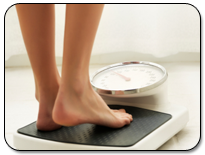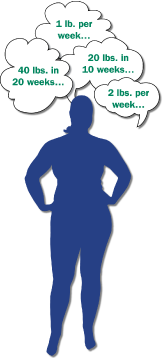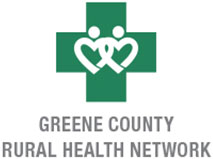Managing Weight Loss
Manageable Challenges: A Realistic Way to Lose Weight
This program has been developed by the New York State Academy of Family Physicians, and we thank them for their work…….

Scientific Proof: Eat Less and Lose Weight
Science shows you will lose weight if you eat fewer calories than what your body burns for the activities of daily living. Your body burns energy (calories) for breathing, digesting food, your heartbeat, and other purposes. Your body also burns calories for when you move about your home or office or when you shop and for other easy activities. If you eat fewer calories than the amount your body burns for these purposes, then you lose weight.
Why Many Weight Loss Plans Fail
Losing weight can be hard. You’re told you have to eat less, eat right, and get active. That’s a big “triple challenge.” So, most people either don’t try to lose weight or they become discouraged and quit after awhile. We say one challenge at a time.
Our Plan is a Manageable Challenge
“Manageable Challenges” starts by asking you to eat less. If you eat less, then you will lose weight. Once you are losing weight by consuming less, then you can start eating healthier food and exercising.
You Can Still Eat Your Favorite Foods…Just Eat Less of Them!
Manageable Challenges has no forbidden foods. You don’t have to take drastic actions like cut out all desserts or never eat French Fries. Such drastic steps often lead to failure or binging. Or, you may be so discouraged you never even try to lose weight. Although eating healthy food is certainly a healthy habit, the best first step is to eat fewer calories than what your body needs.
Exercise: Start Slowly and Increase Gradually
The main benefit of exercising is that it improves your overall health and mental well-being and it helps you to prevent regaining weight after you lose it. Start out by eating less, and after you’ve lost some weight, then you can start exercising. But, if you are already exercising, don’t stop!

Learn About Banking Calories for those Special Occasions
This program will help you “bank” calories if you want to “save up.” Let’s say you want to eat a little extra at a party or special dinner in a few days. Then, you can cut back ahead of time which means you can indulge a bit more when the special occasion arrives. Or, let’s say you want to save up for a special dinner that night, then you make sure you eat less during the day.
Are You Ready to Start Losing?
If you’re unsure you want to start eating less, then try it for 2 or 3 weeks and then see if you’re ready. But, if you’re ready now….then start! Follow the steps below. And, of course, we recommend that you talk with your doctor about losing weight.
Follow These Steps for Losing Weight
 Set goals that are reasonable. Losing even some weight is great success. A 5%-10% weight loss will still make you feel healthier because you will be healthier. Manageable Challenges aims to help you reach a healthier weight, not necessarily a "perfect" weight.
Set goals that are reasonable. Losing even some weight is great success. A 5%-10% weight loss will still make you feel healthier because you will be healthier. Manageable Challenges aims to help you reach a healthier weight, not necessarily a "perfect" weight.
Don't base your goal on some unrealistic beauty goal or when you got married or graduated from school.
Don’t say "I'll lose 10 pounds in 10 days." Aim to lose 1-2 pounds per week. And be flexible. If you think you cut back too much on your eating, then cut back a little less.
My goal is to lose pounds.
I want to lose this many pounds per week:
(simply divide the number of pounds you want to lose by the pounds per week, and you have your number of weeks).
 I will start losing weight on this date:
I will start losing weight on this date: I will reach my goal on this date:
You may want to share a Start Date with a friend or family member. Then, you and your weight-loss partner can give each other moral support. Or, you may simply want to tell someone else your Start Date so that person can help you make sure you start on that day.
“But, what if I don’t start on my Start Date?!?!”
It happens. Just pick another Date and try to be more determined to start.
To lose weight, you must burn more calories than the amount you consume
If you want to lose 1 pound per week, then each day you have to consume 500 fewer calories than what your body burns for daily activities. If you want to lose 2 pounds per week, then each day you have to consume 1,000 fewer calories than what your body burns for daily activities.
The calculator gives people a general estimate of the calories they need. Obviously, some people will need more calories and others will need fewer. To set your calorie goal for the week, just multiply your Daily Calorie Cap by 7.
As you lose weight your calorie cap will drop. So, remember to calculate your new cap.
After a month or so, if you have not lost the amount of weight you had hoped, then try lowering your calorie cap and keeping a better log. Again, do not go below 1,200 calories per day if female and do not go below 1,500 if male.
These health tools are meant for educational purposes only, and are not intended to replace the medical advice of your doctor or health care provider regarding weight loss. Please consult them for advice about a specific medical condition.





